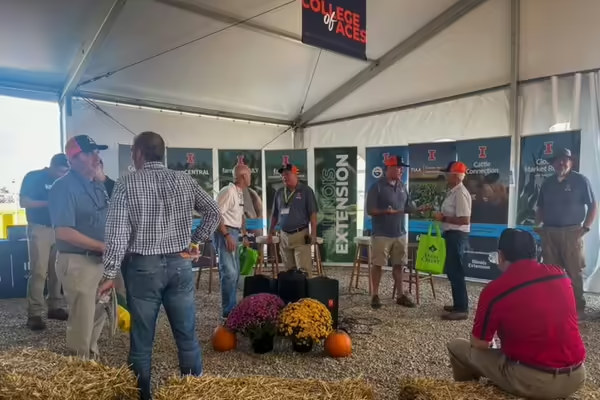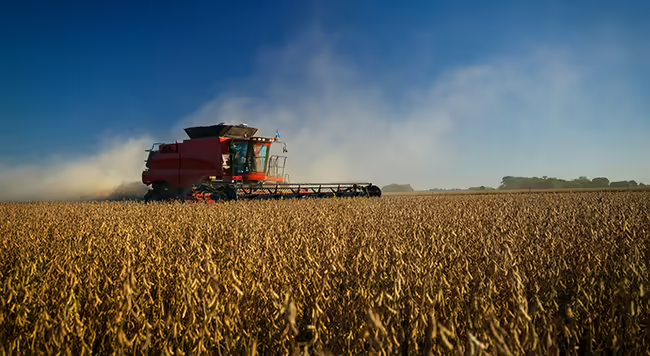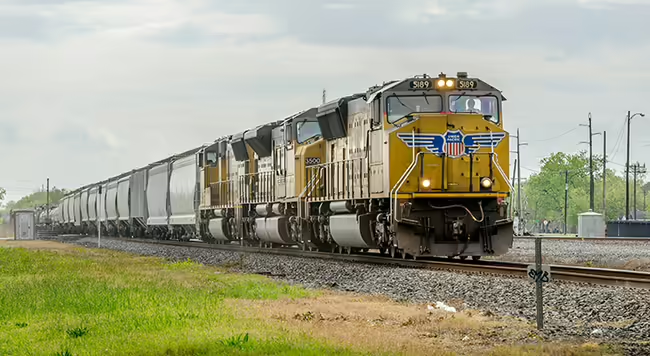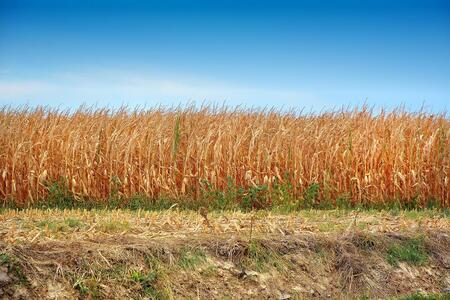Wishing you a safe harvest season!
Welcome to the October edition of the Bureau, LaSalle, Marshall, and Putnam Ag Newsletter! Harvest season is officially underway across our four-county area. It's a time of long hours, hard work, and the culmination of months of planning and care in the field. Whether you're bringing in corn, soybeans, or specialty crops, this season marks a critical point in the agricultural year — and a chance to reflect on successes, challenges, and opportunities for growth.
In this issue, we’ll share timely updates, resources, and educational opportunities to support your operation through harvest and beyond. Subscribe to our email list or follow our Facebook page to receive updates on field conditions, emerging disease and pest concerns, and more!
Emerging issues:
Drought intensifying across the state
August was extremely dry in much of central and southern Illinois, with abnormally dry conditions now being reported across our four-county area. As harvest begins, growers should be aware of the risk of fire and blowing dust with continued drought conditions. Dry crops combined with windy conditions can create a perfect storm for field fires during harvest. Take time to inspect and clean equipment regularly to prevent buildup of combustible materials. Always have multiple fire extinguishers on hand and make sure everyone on your team knows how to use them. A few precautions can go a long way in protecting your crops, equipment, and crew.
Red crown rot of soybean on the rise
Calonectria ilicicola, the pathogen responsible for red crown rot, is becoming increasingly relevant in Illinois soybean production. Once rare, it's now appearing more frequently, especially in southern and central regions. Symptoms include reddish discoloration at the base of the stem and premature plant death. Management strategies focus on crop rotation, resistant varieties, and careful field monitoring to reduce spread and impact.
Setting cash rents in 2026
Setting cash rents for the upcoming crop year involves weighing multiple economic factors, including projected commodity prices, input costs, and farm income trends. With uncertainty in markets and production costs, transparent communication between landowners and tenants is key to establishing fair and sustainable rental agreements. Reductions of 4.3-7.1% per acre depending on productivity are expected. See the full farmdoc article for more information.
New area-based crop insurance product: MCO (Margin Coverage Option)
For the 2026 crop year, a new crop insurance endorsement called Margin Coverage Option (MCO) is available. MCO is an area-based product protecting against operating margin declines driven by falling output prices, rising input costs, or both. In Illinois, corn and soybeans are eligible crops to purchase MCO. See the full farmdoc article for more information.
Research updates:
New land grant research detects dicamba damage from the sky
New research demonstrates that aerial imagery can effectively detect dicamba-related crop damage across large areas. Using drone and satellite data, researchers identified visual patterns of leaf cupping and other symptoms in soybean fields, even when damage was not reported. This approach offers a scalable method for monitoring herbicide drift and its impacts, potentially improving transparency and accountability in pesticide application.
Biologicals vs. biostimulants: new study clarifies confusion
A recent University of Illinois study helps distinguish between biologicals and biostimulants—two increasingly popular but often misunderstood crop inputs. Biologicals typically contain living organisms like microbes that interact with plants or soil, while biostimulants are non-living substances that enhance plant growth or stress tolerance. The study evaluated several commercial products and found that while some showed promise, results were inconsistent across environments. Researchers emphasize the importance of understanding product mechanisms and conducting on-farm trials before widespread adoption.
Phosphorus and Potassium tool in development by U of I researchers
Researchers at University of Illinois are developing a no-cost and confidential online tool aiming to provide farmers with phosphorus (P) and potassium (K) recommendations. This project began in 2022 with on-farm trials to hone in recommendations that account for different soil types, farming practices, and weather conditions. Farmers are now invited to try the tool and provide feedback so researchers can refine it to better meet the needs of Illinois farmers. For more information see this flyer. If you would like to try the tool for yourself please contact local Extension staff at emhansen@illinois.edu or 815-224-0896.
Illinois Centennial Soil Archive Project
Soil samples dating back to 1899 were recently discovered stored in a barn at the University of Illinois. This study seeks to resample the original locations to determine how soils have changed over time. See if your farm is one of these locations!
Collect ticks and help researchers study their movements
Help us to know if tick numbers are truly increasing by collecting them anytime you or family members, including pets, venture outside. This program aims to map where ticks are found, identify the pathogens they carry, and help prevent the spread of diseases.
Save the Date: PSEP Testing 2026
LaSalle County:
- January 14, 2026 | 9:00 AM - 12:00 PM | Illinois Valley Community College | All tests
- February 11, 2026 | 9:00 AM - 12:00 PM | LaSalle County Extension Office | Private only
Bureau County:
- February 17, 2026 | 9:00 AM - 12:00 PM | Bureau County Extension Office | All tests
- March 24, 2026 | 9:00 AM - 12:00 PM | Bureau County Extension Office | All tests
Marshall-Putnam County:
- February 4, 2026 | 9:00 AM - 12:00 PM and 1:00 PM - 4:00 PM | Marshall-Putnam Extension Office | All tests
- February 26, 2026 | 9:00 AM - 12:00 PM and 1:00 PM - 4:00 PM | Putnam County EMA Building | All tests
- March 19, 2026 | 9:00 AM - 12:00 PM and 1:00 PM - 4:00 PM | Marshall-Putnam Extension Office | All tests
Additional resources:
Busy in the field but trying to eat healthy? Local Nutrition & Wellness educator Susan Glassman has you covered! Check out her guide for Quick and Healthy Meals On-The-Go.
Farmers, we understand the rapid pace of federal policy changes can be overwhelming. To stay informed with research-based updates, we recommend following farmdoc on their website and YouTube channel for daily posts and videos. Farmdoc provides analysis, tools, and data to help Illinois’ farmers better manage their farm businesses.
Trying to wrap your head around the changes from the Reconciliation Farm Bill? Farmdoc has a 5-part series that breaks down some of the most impactful changes:
- The increases in premium subsidy for crop insurance
- Additional subsidy provided to crop insurance companies
- Increases in statutory reference prices
- Changes to SCO crop insurance
- Expanded payment limit loophole
To learn more about our upcoming programs and events:
Follow us on Facebook!
Check out our website!
Follow Field Notes blog!
Join our email list!
As we continue to develop new local ag programs, your opinion matters to us. Fill out our program preference survey to let us know what you want to see!





